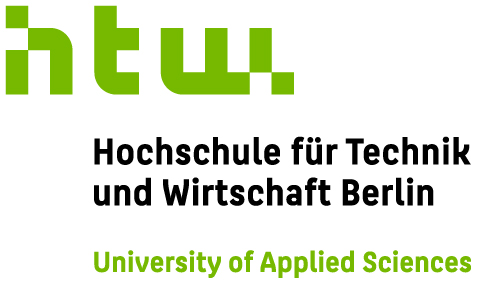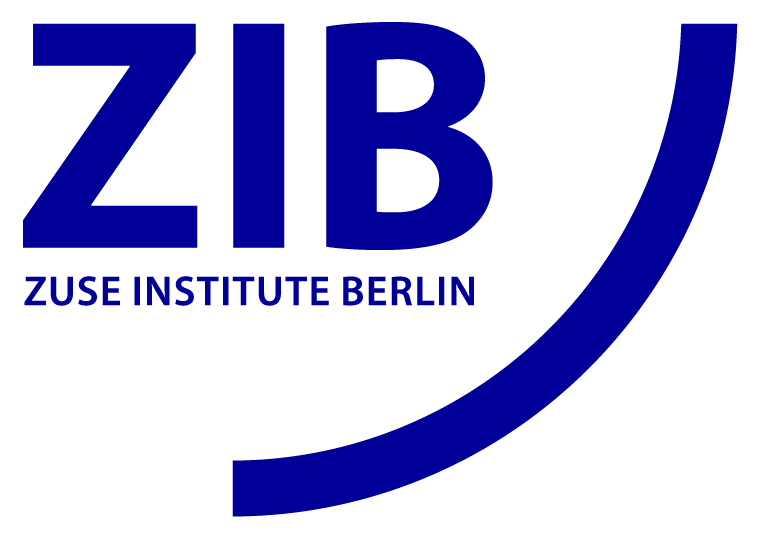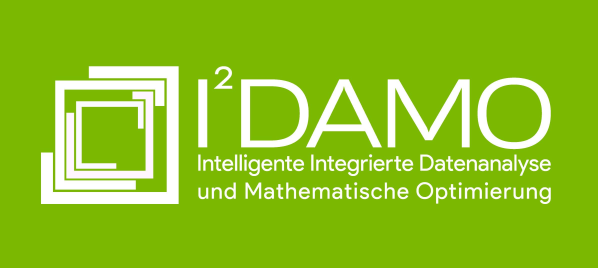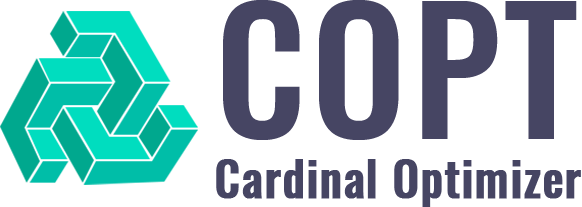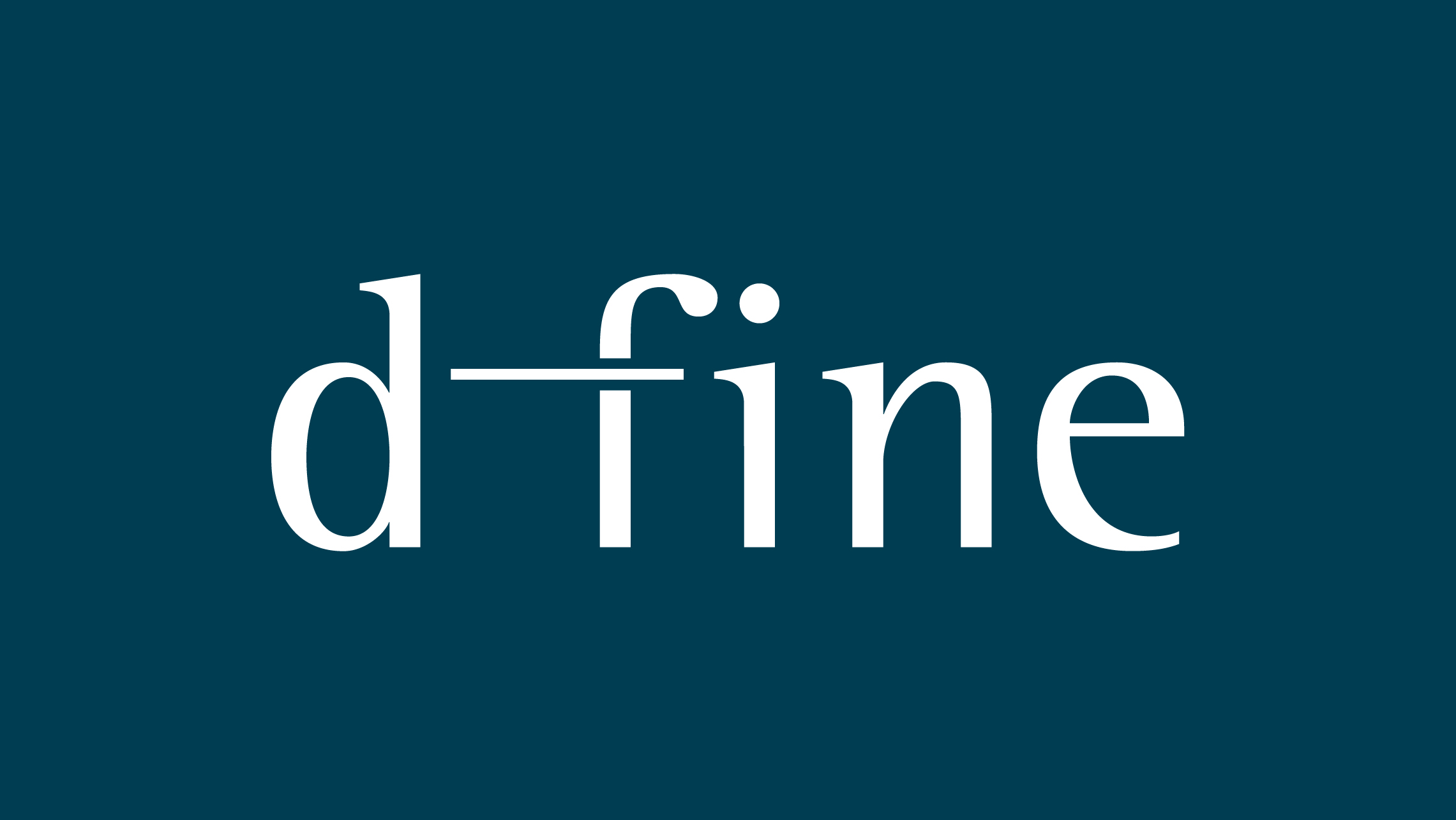About
The summer school CO@Work 2024 was held from September 16 to 27, 2024, at Zuse Institute Berlin with over 120 participants and many more online:
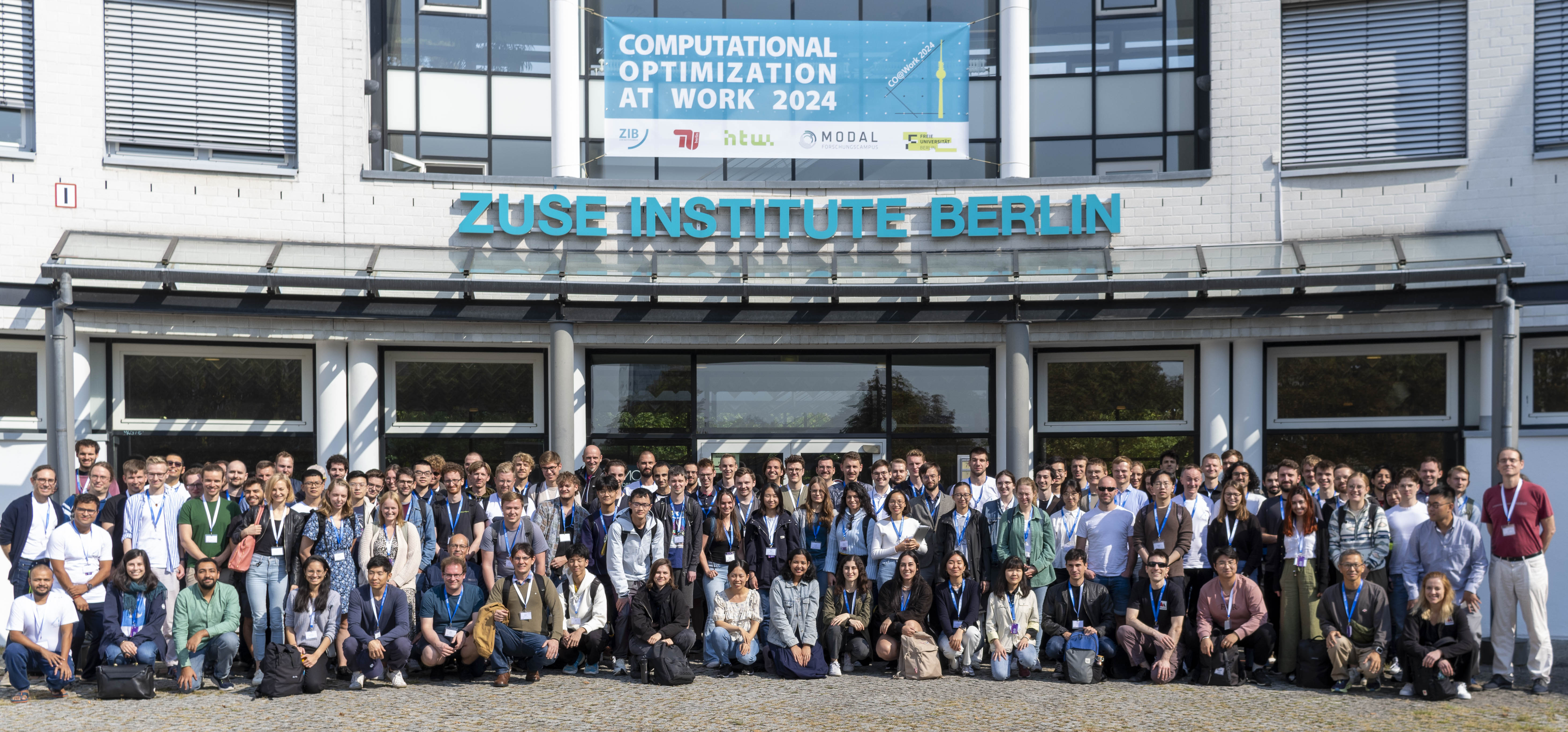
CO@Work 2024 was organized jointly by
TU Berlin,
HTW Berlin,
FU Berlin,
and Zuse Institute Berlin, and co-sponsored by
MATH+,
BMS,
Forschungscampus MODAL,
I²DAMO,
GOR,
DFG Priority Program 2298,
COPT,
d-fine,
FICO,
GAMS,
and
Gurobi.
This block course addresses everyone interested in the use of computational optimization and mathematical programming in concrete applications from practice, in particular advanced masters students, PhD students, and post-docs.
Videos for most presentations are online and can be found on YouTube.
If you have participated, please fill in the TU Berlin course evaluation.
Schedule
The following is a tentative schedule, please note that some details could still change at this stage. On most days, we will have breaks 10:45-11:15, 12:45-14:15, and 15:45-16:15.
For many talks, abstracts can already be revealed by clicking on the title of the talk.
| Monday, 16.09.2024 | Welcome and Introduction | |
|---|---|---|
| 14:30 | Registration (directions) | |
| 15:30 | Timo Berthold | CO@Work: from 2005 to today (slides) (video) |
| 15:40 | Sebastian Pokutta | Welcome to Zuse Institute Berlin (slides) (video) |
| 15:50 | Jens Schulz | Welcome from the German OR Society (slides) (video)
German Society of Operations Research is a non-profit organization with more than 1,000 members. GOR spreads the word about Operations Research throughout academia and practice as its key mission. |
| 16:00 | Annika Preuß-Vermeulen | Berlin Mathematical School PhD program (slides)
The Berlin Mathematical School (BMS) is a joint graduate school of the mathematics departments of the three major Berlin universities, TU Berlin, FU Berlin, and HU Berlin, and the graduate school of the Cluster of Excellence MATH+. The BMS offers a course program in English, various events and mentoring opportunities and advice in non-academic issues. Besides striving for excellence, BMS is actively pursuing the goals of diversity in gender and country of origin for its student body. |
| 16:10 | Ambros Gleixner, Milena Petkovic | Organization and Overview of the Summer School (slides) (video) |
| 16:30 | Martin Grötschel | Optimization and OR: A Sketch of Historical Developments (slides) (video)
If one looks back into recorded history or analyses archaeological findings, it is clear that humans have always tried to act, build, and work efficiently – subject to available knowledge and technology. OR and optimization seem to be genuine human features. I plan to briefly sketch some of these historical developments starting in antiquity, but my focus will be on the details of the advancements in optimization (in particular linear and integer programming) in the last 70 years. One part of my lecture will be staged as a quiz. For those interested in preparing for the quiz, some of the answers can be found in the book “Optimization Stories” that I edited in 2012. The PDF of this book can be downloaded from my homepage at https://www.zib.de/userpage//groetschel/publications/OptimizationStories.pdf or from the Webpage of Documenta Mathematica: https://www.elibm.org/article/10011477 |
| 17:30 | Thorsten Koch | Data Experiment (slides) |
| 18:00 | Welcome BBQ | |
| Tuesday, 17.09.2024 | Fundamentals of Linear Programming and Modelling | |
| 9:15 | Ambros Gleixner | Linear Programming & Polyhedral Theory (slides) (video)
Linear Programming is the foundation for many state-of-the-art methods in computational optimization. In this talk we will revisit the basic theory and give an overview over the most important solution methods. |
| 10:00 | Julian Hall | High Performance Computational Techniques for the Simplex Method (slides) (video)
When families of related LP problems are to be solved, most notably as subproblems when solving MIPs, efficient implementations of the simplex algorithm are used. This lecture will discuss the reasons for this, and give an overview of the most important algorithmic variants and computational techniques for their implementation. |
| 11:15 | Joachim Dahl | Linear Programming: Barrier and First Order Methods (slides) (video)
In this talk, we introduce and discuss the barrier method and the first-order method for LP problems. The barrier method is often the preferred method for solving a standalone LP, for instance, the root LP relaxation of a MIP. The first-order method has become popular recently and it is still being actively developed by the community. We introduce the basic concepts and key implementation techniques of both methods and discuss some potential research topics. |
| 12:00 | Ambros Gleixner | Aspects of MIP Modelling (slides) (video)
Real-world applications and their derived mathematical optimization problems often allow for different, theoretically equivalent formulations. In this talk we will discuss examples for this degree of freedom in the world of mixed-integer linear programming, and formulate some best practices in MIP modelling. |
| 14:15 -17:45 |
Bruno Vieira | Tutorial: Basics of MIP Modelling (github repo)
In this tutorial session, we will learn how to use the FICO Xpress and SCIP Python interfaces to efficiently model and solve basic mixed-integer programming problems via a series of in-class exercises. |
| Wednesday, 18.09.2024 | Fundamentals of Mixed Integer Programming | |
| 9:15 | Timo Berthold | MIP Solving: Branch-and-Bound (slides) (video)
State-of-the-art MIP solvers consist of a plethora of subroutines that take care of different aspects of the solution process and make the solver computationally efficient: presolving, cut generation and selection, primal heuristics, and dedicated node and variable selection rules (aka branching). The focus of all presentations today is to give an insight into strategies that are actually employed by solvers in practice to give an understanding of how such a solver works internally. This presentation looks into branching strategies. We present various information that can help with making a good decision on how to split the search space and how to traverse it most efficiently. |
| 10:00 | Timo Berthold | MIP Solving: Cutting Planes (slides) (video)
State-of-the-art MIP solvers consist of a plethora of subroutines that take care of different aspects of the solution process and make the solver computationally efficient: presolving, cut generation and selection, primal heuristics, and dedicated node and variable selection rules (aka branching). The focus of all presentations today is to give an insight into strategies that are actually employed by solvers in practice to give an understanding of how such a solver works internally. This presentation looks into cutting plane algorithms. We will discuss various algorithms to generate additional valid inequalities for a MIP, given a solution of its LP relaxation in order to strengthen the relaxation. We will also touch on the topic of selecting between different such inequalities which to add to the problem formulation and which to drop. |
| 11:15 | Timo Berthold | MIP Solving: Primal Heuristics (slides) (video)
State-of-the-art MIP solvers consist of a plethora of subroutines that take care of different aspects of the solution process and make the solver computationally efficient: presolving, cut generation and selection, primal heuristics, and dedicated node and variable selection rules (aka branching). The focus of all presentations today is to give an insight into strategies that are actually employed by solvers in practice to give an understanding of how such a solver works internally. This presentation looks into primal heuristics. We will introduce various ideas to try to quickly generate an ad-hoc solution for a mixed-integer program without an exhaustive search. We will also discuss the orchestration of such heuristic algorithms. |
| 12:00 | Timo Berthold | MIP Solving: Presolving (slides) (video)
State-of-the-art MIP solvers consist of a plethora of subroutines that take care of different aspects of the solution process and make the solver computationally efficient: presolving, cut generation and selection, primal heuristics, and dedicated node and variable selection rules (aka branching). The focus of all presentations today is to give an insight into strategies that are actually employed by solvers in practice to give an understanding of how such a solver works internally. This presentation looks into presolving techniques. We will describe various techniques to tighten the problem formulation, reduce the search space, and improve the numerics of a given MIP model before starting the actual branch-and-bound search process. |
| 14:15 -17:45 |
Bruno Vieira, Mohammed Ghannam, Joao Dionisio | Tutorial: Advanced MIP Modelling (github repo)
Following up the basics of MIP modelling, in this tutorial we will extend the use of the FICO Xpress and SCIP Python interfaces to more advanced modelling techniques including cutting planes, solving non-linear problems and the use of callbacks for interacting with the solver. |
| Thursday, 19.09.2024 | Advanced Mathematical Optimization | |
| 9:15 | Ksenia Bestuzheva | Global Optimization of Mixed-Integer Nonlinear Programs (slides) (video)
Mixed-integer nonlinear programming (MINLP) deals with problems that simultaneously contain nonlinearities and integer variables. If the problem involves nonconvex nonlinearities, finding optimal solutions and proving optimality is further complicated. This lecture will explain the fundamentals of MINLP and provide an overview of convex and nonconvex MINLP algorithms, their main aspects and the interaction between these aspects. Further, we will discuss practical topics related to the modelling and solving of MINLPs. |
| 10:00 | Marc Pfetsch | Solving Mixed-Integer Semidefinite Programs (slides) (video)
Mixed-integer semidefinite programs deal with optimization subject to semidefinite constraints on matrix variables including integrality conditions. We review solving techniques for such problems. This includes presolving and heuristics. An implementation in SCIP-SDP will be demonstrated. |
| 11:15 | Ambros Gleixner | Numerics in LP & MIP Solvers (slides) (video)
Virtually all state-of-the-art MIP solvers use floating-point computation. In order to deal with the resulting roundoff errors consistently, they define feasibility and optimality within numerical tolerances, and use many numerical safeguards in order to avoid incorrect results. In this talk we will first give examples for the most common reasons for numerical errors in floating-point MIP solvers, and provide best practices for avoiding numerically troublesome computations. Second, we will present a numerically safe MIP solver implemented in SCIP that is able to solve MIPs exactly over the rational numbers, and produces certificates of correctness that can be checked independently of the solving process. |
| 12:00 | Marco Lübbecke | Branch-and-Price Crash Course (slides) (video)
Decomposition and refomulation techniques (like Dantzig-Wolfe) can lead to MIP models with many variables. Even only the LP relaxations of such models need to be solved by column generation. We discuss column generation basics and options how to embed this into a branch-and-cut tree leading to branch-and-price. |
| 14:15 -17:45 |
Mohammed Ghannam, Joao Dionisio | Tutorial: Implementing Branch-and-Price (github repo)
By taking advantage of SCIP’s plugin design, it is not too cumbersome to implement Branch-and-Price to solve problems that would otherwise be unreasonably difficult. In this tutorial session, you will learn how to implement this yourself using PySCIPOpt, SCIP’s Python interface. The session will also cover some of the theory justifying the effectiveness of the approach. |
| Friday, 20.09.2024 | Interactive Optimization and Learning | |
| 9:15 | Grégoire Montavon | Explainable AI, Learning Objectives, and the Clever Hans Effect (slides) (video)
In this talk, I will introduce basic concepts of Explainable AI (XAI) such as the problem and techniques of feature attribution. Connections will be made to the problem of optimizing an ML model, in particular how misspecified ML objectives can lead to the Clever Hans effect or "right for the wrong reasons". Finally, I will show how Explainable AI, together with a human in the loop, provides an effective solution to this problem. |
| 10:00 | Jannis Kurtz | Deep Learning in Robust Optimization (slides) (video)
Deep learning (DL) is one of the most popular approaches used for recent developments in the realm of Artificial Intelligence. On a high level, the goal in DL is to fit a neural network to available training data to solve classification or regression problems. In this talk we will study neural networks from a mixed-integer optimization perspective. We show that, under certain assumptions, the evaluation of an already trained neural network can be modeled as a mixed-integer linear problem. These trained neural networks can be used to support classical optimization tasks in different ways. The focus of this talk will be on robust optimization problems, where the goal is to find an optimal solution of an optimization problems which is robust against uncertainty in the problem parameters. We will show how MIP representations of neural networks can be used in robust optimization to speed up solution algorithms and model uncertainty sets. |
| 11:15 | Nicole Megow | Learning-Augmented Algorithms for Scheduling (slides) (video)
Uncertainty poses a significant challenge on scheduling and planning tasks, where jobs may have unknown processing times or unknown dependencies. However, assuming a complete lack of a priori information is overly pessimistic. With the rise of machine-learning methods and data-driven applications, access to predictions about input data or algorithmic actions becomes feasible. Yet, blindly trusting these predictions might lead to very poor solutions, due to the absence of quality guarantees. In this talk, we explore recent advancements in the popular framework of Algorithms with Predictions, which integrates such error-prone predictions into online algorithm design. We examine various prediction models and error measures, showcasing learning-augmented algorithms for non-clairvoyant scheduling with strong error-dependent performance guarantees. We demonstrate the potential of imperfect predictions to enhance scheduling efficiency and address uncertainty in real-world scenarios. |
| 12:00 | Christoph Spiegel | The Role of Machine Learning for Mathematics (slides) (video)
This talk explores the impact of machine learning on theoretical mathematics research through three key perspectives: approximation, generalization, and emergence. We examine how neural networks can approximate mathematical objects, discuss ML's role in generating and testing conjectures, and consider the potential for AI to assist in formal mathematical reasoning. The presentation concludes with practical considerations for researchers looking to incorporate machine learning into their mathematical investigations. |
| 14:15 | Berkant Turan | Tutorial: Hands-on Machine Learning
In this hands-on session, we dive into deep learning and its optimization techniques. We’ll discuss key concepts of deep learning optimization and focus on common first-order optimization algorithms (SGD, Adam, AdaGrad, etc.). Participants will interactively fill in missing code in a Python notebook to implement these algorithms, and apply them on a deep learning task. This session combines theoretical insights with practical coding tasks, offering an in-depth understanding of optimization in deep learning. |
| 16:15- 17:45 |
Mathieu Besancon | Tutorial: Hands-on Frank-Wolfe
This tutorial will introduce the audience to Frank-Wolfe (FW) algorithms, a class of first-order methods for nonlinear optimization with structured convex constraints. After a quick introduction to the theory of these algorithms, we will use the FrankWolfe.jl library to solve some problems in machine learning with desired structure (sparsity, low rank), and operations research such as the traffic assignment problem. We will also show applications of Frank-Wolfe to solve convex relaxations of mixed-integer convex problems, in which the constraint structure can be efficiently exploited, including the optimal design of experiments and special cardinality-constrained problems. |
| 19:15 | Conference Dinner: meet at base of Berlin TV Tower | |
| Saturday, 21.09.2024 | Vehicle Routing | |
| 10:00 | Eduardo Uchoa | Exact Algorithms for Vehicle Routing: advances, challenges, and perspectives (slides) (video)
The vehicle Routing Problem (VRP) is among the most widely studied problems in operations research and combinatorial optimization. The current state-of-the-art exact VRP algorithms employ a combination of column generation and cut separation, known as Branch-Cut-and-Price (BCP) algorithms. This presentation examines notable recent contributions made by various researchers in the field. Additionally, the talk showcases VRPSolver, a very flexible package that implements a BCP algorithm that achieves outstanding performance for many routing, packing, and scheduling problems. Furthermore, VRPSolverEasy, a recent Python application built on top of VRPSolver, is introduced. While heuristic algorithms are likely to remain the dominant approach for practical routing, the availability of exact solutions for reasonably sized instances opens up new possibilities. |
| 10:45 | Kai Hoppmann-Baum | "Excuse me, Sir, we ordered 31 minutes ago!" - How to address time delays in food delivery (slides) (video)
The Vehicle Routing Problem with Pickup and Delivery (VRPPD) is an important variant of the well-known Vehicle Routing Problem (VRP). It involves planning optimal routes for a fleet of vehicles to transport goods from specified pickup locations to designated delivery points, all while meeting various operational constraints. At Delivery Hero, a leading multinational online food ordering and delivery company headquartered in Berlin handling over 10 million orders daily across more than 70 countries, the VRPPD is central to our operations. A key challenge in our delivery operations is accurately estimating food preparation times, which are crucial for synchronizing restaurant pickups with delivery schedules. Any deviation from the estimated preparation times can disrupt the entire delivery plan: early readiness may lead to cold food and poor customer experience, while delays can cause rider wait times and subsequent scheduling issues. In this talk, we explore optimization strategies to address the uncertainties in food preparation times. We will show various approaches, evaluate their effectiveness in practice, and highlight their potential benefits and limitations. |
| 11:15 | Thorsten Koch | Stochastic Local Search Heuristics (slides) (video)
In many cases, one is interested in getting a reasonably good solution fast, where fast can both mean computing time and/or programming effort. Most heuristics, such as simulated Annealing, Tabu Search, Genetic Algorithms, and many others, are variants of greedy stochastic local search. We will give an introduction to the subject and explain how this, in general, works and what to expect: Where does it usually work well, where does it often fail, and when is it a good idea to apply? Furthermore, we give some related side remarks on fast implementations and quantum computing. |
| 11:45 | Lunch | |
| 12:45 -15:00 |
Milena Petkovic, Kai Hoppmann-Baum | Computational Challenge Day 1 (github repo) (slides) |
| Sunday, 22.09.2024 | Day off | |
| Monday, 23.09.2024 | Applied Machine Learning and Optimization | |
| 9:15 | Andrea Lodi | ML-augmented Branch and Bound for MILP (slides) (video)
Mixed Integer Linear Programming (MILP) is a pillar of mathematical optimization that offers a powerful modeling language for a wide range of applications. During the past decades, enormous algorithmic progress has been made in solving MILPs, and many commercial and academic software packages exist. Nevertheless, the availability of data, both from problem instances and from solvers, and the desire to solve new problems and larger (real-life) instances, trigger the need for continuing algorithmic development. MILP solvers use branch and bound as their main component. In recent years, there has been an explosive development in the use of machine learning algorithms for enhancing all main tasks involved in the branch-and-bound algorithm, such as primal heuristics, branching, cutting planes, node selection and solver configuration decisions. This work presents a survey of such approaches, addressing the vision of integration of machine learning and mathematical optimization as complementary technologies, and how this integration can benefit MILP solving. In particular, we give detailed attention to machine learning algorithms that automatically optimize some metric of branch-and-bound efficiency. We also address how to represent MILPs in the context of applying learning algorithms, MILP benchmarks and software. |
| 10:00 | Timo Berthold | Machine Learning inside MIP solvers (slides) (video)
As we have seen in the previous week, modern MIP solvers consist of many subroutines that take care of different aspects of the solution process: presolving, cut generation, cut selection, primal heuristics, and so forth. For a given MIP, the solver has to make online decisions on which of multiple alternative instantiations of a subroutine to employ or how to combine them. While it is often hard to beat hand-crafted rules, the use of machine learning models for making those decisions has become more prominent in recent years. In this presentation, we will discuss four projects in which we used ML to improve the performance of the solvers Xpress and SCIP on general MIP benchmarks. Two topics relate to cutting planes, while the other two are concerned with numerical stability. |
| 11:15 | Jan Kronqvist | Building upon MIP and non-smooth optimization to learn robust deep neural networks (slides) (video)
It is well known that deep neural networks (DNNs) are sensitive to adversarial attacks. For example, it is often possible to change the classification of an image with a minuscule (not visible) targeted disturbance to an image. Here we refer to DNNs as being robust if a bounded disturbance, with a user-defined radius, to the input cannot result in an undesired change in the output (for example, change the classification). The ability to analyze and improve robustness can be critical for real-world applications, especially for safety-critical applications. In this talk, we will first explore how mixed-integer programming (MIP) can be used to detect weaknesses in DNNs and find adversarial examples. We will cover the commonly used approaches, and briefly discuss current challenges. Furthermore, we explore how we can utilize adversarial examples to improve robustness. By using classical concepts from mathematical programming, such as cutting planes, quadratic programming, and multi-objective optimization, we can re-train DNNs and greatly improve robustness. |
| 12:00 | Ruth Misener | Optimal decision-making problems with trained surrogate models embedded (slides) (video)
Several of our recent projects (and complementary projects by other groups worldwide) embed data-driven surrogate models into larger optimal decision-making problems. For example, with the chemicals company BASF, we considered solving inverse problems over trained graph neural networks to design new molecules. This presentation discusses some of the mathematical challenges and practical applications we have explored. We also mention software implementations and close with open challenges in the area. |
| 14:15- 17:45 |
Milena Petkovic | Computational Challenge Day 2 |
| Tuesday, 24.09.2024 | Excursions to Volkswagen and TESLA | |
| Wednesday, 25.09.2024 | Energy Systems | |
| 9:15 | Milena Petkovic | From Energy Systems to Material Science: Optimization as a Common Denominator for a Sustainable Future (slides) (video)
The energy transition presents complex challenges that span multiple disciplines and scales. This talk explores diverse strategies in developing decision support tools where mathematical optimization (MO), particularly data-driven methods, plays a crucial role. We will show how MO techniques refine the operations of large energy networks and enhance the intricate processes of semiconductor crystal growth, which are essential for next-generation materials. We highlight the versatility and impact of MO, emphasizing its pivotal role as a strategic tool in advancing sustainable technological progress. |
| 10:00 | Inci Yüksel-Ergün | Data Preprocessing and Data Quality Assessment for Energy System Optimization (slides) (video)
The European energy system is undergoing a fundamental transition due to decarbonization efforts. Besides, in recent years, the energy system’s needs have been subject to significant changes due to disruptive events. Under these circumstances, decision-makers need more complex energy system optimization models to make effective decisions at all levels, from policy-making to energy transport. To make reliable decisions, these models require real-world data that is highly interconnected and consistent. However, obtaining such data with sufficient quality is challenging. In this talk, we will focus on the challenges of data preprocessing and data quality assessment in energy system optimization, particularly in gas transport network optimization. We will discuss how to assess data quality and how to improve data through various data preprocessing strategies. We will explore mathematical optimization methods in this effort, including detecting and correcting complex data errors. We will illustrate these approaches with real-world examples using open gas network data. |
| 11:15 | Jaap Pedersen | Quota Steiner Tree Problem and its Application on Wind Farm Planning (slides) (video)
We discuss the Quota Steiner Tree Problem in graphs (QSTP) and its application for the integrated layout and cable routing problem of onshore wind farm planning. We shortly introduce the general Steiner tree problem in graphs and Scip-Jack, a software package for solving Steiner tree related problems. We present a transformation of the QSTP that significantly outperforms standard out-of-the-box MIP solvers in the context of regional wind farm planning. Finally, we explore the possibilities of extending the QSTP formulation by relevant technical constraints such that our approach becomes applicable to the design of a single wind farm. |
| 12:00 | Stephanie Riedmüller | Multi-objective design and operation optimization for district heating networks (slides) (video)
Supporting decision-making processes for transforming district heating networks poses a challenge in the energy transition. Exploring transformation pathways for the grid while simultaneously optimizing its operation is vital. We model both design and operational decisions via mixed integer linear programming and combine them in an integrated way. However, the goal for decision-making between possible transformation pathways often involves several objectives, e.g., balancing environmental targets and costs. While solving large energy models efficiently is difficult to achieve in general, solving them for multiple objectives even increases efficiency issues. We, therefore, explore algorithmic approaches to find a relevant subset of Pareto-optimal solutions. |
| 14:15- 17:45 |
Milena Petkovic | Computational Challenge Day 3 |
| Thursday, 26.09.2024 | Traffic and Logistics | |
| 9:15 | Ralf Borndörfer | Design of Public Transit Systems (slides) (video)
The design of the infrastructure, the line system, and the fare prices defines the level of service that a public transit system offers to the public. These decisions are of great importance and are not easily revised, hence they should be taken with great care. However, unlike operational decisions on resource allocations of vehicles and crews, which are nowadays routinely optimized using mathematical programming techniques by almost all public transit companies, questions of service design are rarely considered as combinatorial optimization problems, for which mathematical methods could provide valuable decision support. Instead, most systems rather evolve along a path of ad hoc decisions. However, powerful methods have been developed and substantial optimization potentials have been demonstrated. The lecture discusses mathematical optimization approaches to network design, line planning, and fare planning as well as examples of their successful application in real-world examples. |
| 10:00 | Niels Lindner | Periodic timetable optimization in public transport (slides) (video)
We will introduce the standard modeling of periodic timetabling problems in public transport by means of event-activity networks and the Periodic Event Scheduling Problem (PESP). We discuss the mathematical structure and complexity of this problem, and focus on how to use techniques from combinatorial optimization and mathematical programming to compute good-quality timetables. |
| 11:15 | Daniel Rehfeldt | Optimizing vehicle and crew schedules in public transport (slides) (video)
Vehicle and crew scheduling are two fundamental problems in public transport optimization. We introduce these problems along with solution methods. We also highlight challenges that we encounter when solving such problems in practice. |
| 12:00 | Daniel Roth | Using airline planning software to plan ICU personnel (slides)
When the pandemic hit Sweden, Karolinska University Hospital in Stockholm needed to build new nursing schedules to accommodate a big influx of new nurses and healthcare workers for its ICU. They turned to Jeppesen, a division of Boeing that has developed market-leading digital aviation software, Jeppesen Crew Rostering, which employs FICO® Xpress Optimization. In just days, the Boeing team created rosters for more than 300 nurses and healthcare workers during the peak period, resulting in more workable shifts for staff and better coverage for the hospital. |
| 14:15- 17:45 |
Milena Petkovic | Computational Challenge Day 4 |
| Friday, 27.09.2024 | Industry Day | |
| 9:15 | Zsolt Csizmádia | Amazon: optimising the journey of a package. Examples of optimisation and machine learning applications (slides) (video) |
| 9:45 | Adèle Gouttes | How to set optimal prices during a sales event steered by humans?
At Zalando, a fashion e-commerce company, we want to set the prices of all our products (about 700k) across 24 countries. The prices need to be set optimally, considering the stock available and how much we expect to sell in the future. We also have human decision makers, who need to meet objectives defined at the country level: for instance, the total revenue needs to belong to a given revenue corridor. These three building blocks (the optimiser, the forecast model, and the humans) can be rather simple. However, when combining them, multiple challenges arise. I will present a few of them. |
| 10:15 | Jakob Witzig | SAP Supply Chain Optimization (slides) (video)
SAP, a global leader in Supply Chain Management Software, offers a wide range of cloud and on-premise solutions for supply chain planning, logistics, manufacturing, and more. For over 25 years, optimization algorithms have been a crucial component of SAP's supply chain solutions. However, applying these algorithms to real-world, large-scale supply chains presents significant challenges in terms of functionality and performance. To address this, SAP utilizes a variety of optimization algorithms, often in combination with (meta-)heuristics, to improve scalability and performance. In this talk, we will provide an overview of the algorithms used in different solution areas and present examples of the challenges faced in solving real-world planning problems for SAP customers. We will cover areas such as supply chain network planning, inventory optimization, production planning, scheduling, and vehicle routing in various SAP solutions. Additionally, we will discuss planned future innovations, including the transition from batch-oriented to online optimization, the application of quantum computing to optimization problems, and the use of Artificial Intelligence (AI) in supply chain management. Overall, this talk will offer insights into the current research focus areas and the exciting developments on the horizon for supply chain optimization. |
| 11:15 | Merlin Viernickel, Jennifer Uebbing | Optimization in practice: from long to short, from planning to operation of (power) grids (slides) (video)
With the European Green Deal, the EU has set itself targets for climate neutrality by 2050. This requires the expansion of electricity grids, taking into account the development of other technologies and infrastructures. In particular, the proportion of renewable energies in Europe is rising steadily. As a result, our electricity generation is becoming more and more dependent on the weather and uncertainty in the grid is increasing. Transmission system operators use cross-sector optimization models to compare different future scenarios. With the help of mathematical optimization, we can nevertheless guarantee grid security as cost-effectively as possible. |
| 11:45 | Felix Hennings | Dimension Local Energy Hubs to Reduce Grid Congestion (slides) (video)
DoingTheMath is a small consulting company that develops custom-made forecasting and decision support tools to help organisations on their way to more sustainable operations. The presented use case deals with capacity decisions in local multi-energy systems called "Energy Hubs", which are part of the solution to the congestion problems in the Dutch power grid. Besides discussing the problem description and solution approaches, different "non-mathematical" aspects are highlighted that are crucial for the successful application of mathematical optimisation in practice. |
| 12:15 | Petra Bauer | Mathematical Optimization @ Siemens (slides)
The research group "Operations Research for Decision Support" at Siemens Technology applies Mathematical Optimization to a broad variety of real-life problems from different Siemens domains such as industry, energy, mobility, or healthcare. This talk presents some facts and figures about Siemens, gives insights into the background and competences of our team as well as our everyday work, and showcases two projects, one about a check-in/be-out ticketing solution, the other about solar power plant layout optimization. |
| 14:15 | Tim Januschowski | If Optimization is one part of the practical puzzle, what are the others?
Solving optimization problems in practice involves a whole stack of tools that we need to not only be aware of, but also need to get our hands on. Understanding of the data generation process, data acquisition, data preparation, predictive data modelling, optimization, down-stream consumption, etc. Modern platforms like Databricks offer tooling to build end-to-end pipelines and I will showcase what we need to know about to be a well rounded applied scientist in industry. |
| 14:45 | Justine Broihan | Mastering the Optimization Pipeline: A Consultant’s Perspective (slides) (video)
In the realm of mathematical optimization, the role of a consultant extends far beyond technical expertise. This talk dives into the nuances of consulting in mathematical optimization, exploring both the rewarding and challenging aspects of the job. I will share insights from real-world projects, highlighting the often significant gap between a client's initial description of their needs and their actual objectives. By walking through a typical project pipeline—from initial consultation to solution delivery—I aim to shed light on the critical skills needed to bridge these gaps and ensure successful project outcomes. Join me to explore the art and science of mastering the optimization pipeline. |
| 15:15 | Networking with Industry | |
| 16:15 | Pawel Lichocki | Combinatorial Optimization at Google: tools, solvers, and applications (slides) (video)
Google Optimization Tools (aka OR-Tools, https://developers.google.com/optimization) is a mature, open source software suite for combinatorial optimization, tuned for tackling the world's toughest problems in i) integer and linear programming, ii) satisfiability and constraint programming, iii) vehicle routing and iv) graph flows. We present the available modeling APIs and solvers. In more details, we explore mixed-integer programming (MIP) and its application at Google in optimization of real-life, large-scale computer systems. In particular, we present MathOpt, a solver agnostic framework to model and solve linear and quadratic problems with many advanced features like incrementality, callbacks and remote solving. We also elaborate on the award-winning CP-SAT solver, and its applicability to solve MIP problems. Finally, we discuss how MIPs are used within a larger production environment. Overall, we show that OR-Tools provides a unified, high-quality experience for efficient combinatorial optimization across multiple platforms (Windows, Linux, Mac) and languages (C++, C#, Python, Java). It is, thus, a great one-stop solution for many academic endeavors and industrial applications. |
| 16:45 | Matthias Miltenberger | Gurobi OptiMods - Painless Optimization Templates (slides) (video)
One of the most important aspects of mathematical optimization and Operations Research is getting your data into a form that optimization solvers can understand and work with. The "art of modeling" as it is often referred to, can all too easily get in the way of actually solving the problem at hand. Gurobi's open-source OptiMods are data-driven Python APIs for different common optimization use cases. They enable practitioners and learners alike to compute solutions without requiring extensive modeling experience. This session presents the goals and design of the project and explains how to use and extend it. We will also give an insight into how the Gurobi Experts team works to get the most out of Gurobi for its customers. |
| 17:15 | Thorsten Koch | Data experiment: final remarks (slides) |
| 17:30 | Milena Petkovic | Results of the Computational Competition (slides) |
| 17:40 | András Czegel, Federico Michelotto, Matea Miskovic, Franziska Strobel | Winning DH's VRPPD Challenge (slides) |
| 17:50 | Timo Berthold, Ambros Gleixner | Closing (slides) |
| 18:00 | Farewell BBQ | |
| Monday, 07.10.2024 | Examination |
The examination for all students that participated on-site and wish to obtain a 10 ECTS certificate will be held one week after the summer school, October 7, 15:00-17:00. The exam will be on-site for students from Berlin universities (in room MA004 at TU Berlin's math building) and remotely for other participants.
Optimize the Future of Delivery: DH’s VRPPD Challenge
Are you passionate about solving complex logistic problems in actual operations? Together with Delivery Hero (DH) we invite you to participate in a computational challenge to tackle a Vehicle Routing Problem with Pickup and Delivery (VRPPD) arising in the real world.
As one of the world's leading online local delivery platforms, Delivery Hero (DH) relies on cutting-edge optimization techniques to ensure that millions of orders are delivered efficiently every day. Besides applying a manifold of heuristic methods, we at DH are currently broadening our portfolio of solution approaches by incorporating exact algorithms. And this is where you can actually help us and make a difference: In this challenge, you'll be tasked with implementing and solving the VRPPD using an approach based on Mixed-Integer Linear Programming (MIP).
What makes this challenge truly exciting? Not only will you work on one of the most crucial logistical problems in our industry and solve problem instances from the real-world, you will additionally have the freedom to combine MIP with heuristic methods of your choice. This hybrid approach shall allow you to explore creative and efficient ways to achieve high-quality solutions within short computational times.
Whether you're interested in pure optimization or eager to experiment with a blend of exact and heuristic techniques, this challenge offers you the platform to demonstrate your skills, innovate, and make a real impact. Participants will develop a working prototype capable of handling real-world complexities, with the potential to influence how a global leader like Delivery Hero operates.
As highlights, in this computational challenge you will ...
- Model and solve the VRPPD: Implement a MIP model for the VRPPD, incorporate constraints such as vehicle capacity, time windows, and pickup-delivery precedence.
- Explore hybrid approaches: While the primary focus is on MIP, you're encouraged to enhance your solution by integrating heuristic methods, e.g. local search operators, to improve solution quality and computational efficiency.
- Create scalable solutions: Your prototype should handle large-scale problems representing the most crucial real-world scenarios at Delivery Hero, striking a balance between optimality and tractability.
- Showcase your innovation: Last but not least, present your solution to industry experts, and gain recognition for your creativity, technical prowess, and problem-solving abilities.
This challenge is not about finding the best theoretical solution—it's about delivering practical, innovative solutions that can operate effectively in the dynamic world of food delivery logistics. Are you ready to optimize the future of delivery?
You can find a precise description and data for the challenge at this github repo.
The challenge has ended on September 27th. We congratulate the winning team
- Team 5:András Czégel, Franziska Strobel, Matea Miskovic, Federico Michelotto
- Cool Guys: Sami Halaseh, Lukas Mehl, Francesco Cavaliere, Lukas Eveborn
- Dine Hard: Lisanne Heuseveldt, Oliver Voigt, Veerle van den Hurk, Dominik Krupke
Speakers
- Petra Bauer, Siemens AG
- Mathieu Besancon, ZIB and Inria Grenoble
- Timo Berthold, TU Berlin and FICO Xpress
- Ksenia Bestuzheva, ZIB
- Ralf Borndörfer, FU Berlin and ZIB
- Justine Broihan, GAMS
- Zsolt Csizmádia, Amazon
- Joao Dionisio, Universidade do Porto
- Mohammed Ghannam, HTW Berlin and felmo GmbH
- Ambros Gleixner, HTW Berlin and ZIB
- Adèle Gouttes, Zalando
- Martin Grötschel, BBAW
- Julian Hall, University of Edinburgh
- Felix Hennings, Doing the Math
- Joachim Dahl, Cardinal Operations
- Kai Hoppmann-Baum, Delivery Hero
- Tim Januschowski, Databricks
- Thorsten Koch, TU Berlin and ZIB
- Jan Kronqvist, KTH
- Jannis Kurtz, University of Amsterdam
- Pawel Lichocki, Google
- Niels Lindner, FU Berlin and ZIB
- Andrea Lodi, Cornell Tech
- Marco Lübbecke, RWTH Aachen
- Nicole Megow, University Bremen
- Matthias Miltenberger, Gurobi Optimization
- Ruth Misener, Imperial College London
- Grégoire Montavon, FU Berlin
- Jaap Pedersen, ZIB
- Milena Petkovic, ZIB and Leibniz IKZ
- Annika Preuß-Vermeulen, BMS
- Marc Pfetsch, TU Darmstadt
- Sebastian Pokutta, TU Berlin and ZIB
- Daniel Rehfeldt, Optibus
- Daniel Roth, Boeing
- Jens Schulz, Gesellschaft für Operations Research e.V.
- Christoph Spiegel, ZIB
- Merlin Viernickel und Jennifer Uebbing, d-fine
- Berkant Turan, ZIB
- Eduardo Uchoa, Universidade Federal Fluminense
- Bruno Vieira, FICO Xpress
- Jakob Witzig, SAP
- Janina Zittel, ZIB
Registration
There are good and bad news. The bad news first: The application for the in-person event is currently closed because we have reached our capacity limit. If spots become available, we will contact people on our waiting list. That being said, if you cannot join CO@Work for any unforeseen reasons, please let us know so we can pass your spot along.
The good news: There will be a limited (!) online version of CO@Work. Online participants will have the possibility to:
- view all* lectures as a stream in a Zoom Webinar (*=provided the lecturer's permission)
- ask questions via Zoom's Q&A capabilities
- join the hand's-on tutorials
- participate in the networking events or the excursion
- receive any ECTS certificates
- enjoy late summer in sunny Berlin
Online participation is free. The registration fee for on-site participation will be 100 EUR per participant, waived for students from Berlin universities. The language of the course is English.
Accommodation
There are only few hotels within less than half an hour walking distance of ZIB, those are listed below. If those are booked, we recommend to look for accommodation close to the subway line U3, the bus line X83 or the bus line 101, all of which have a stop close to ZIB.Please note that September 28/29 is the weekend of the Berlin Marathon, so it is probably a good idea to book as soon as possible, in particular if you wish to stay beyond the last Friday.
Address: Takustr. 39, 14195 Berlin
Web: https://www.seminaris.de/hotels/berlin/seminaris-campushotel-berlin
Getting to ZIB: 300 metres to walk
Hotel Morgenland
Address: Finckensteinallee 23-27, 12205 Berlin
Web: https://www.hotel-morgenland.de
Getting to ZIB: 25 minutes via direct bus connection M11
Apartment Hotel Dahlem
Address: Clayallee 150-152, 14195 Berlin
Web: https://www.apartment-hotel-berlin.de/en/the-hotel/
Getting to ZIB: 6 minutes by bus X83 plus 600 metres to walk OR 25 minutes to walk
Ravenna-Hotel Berlin
Address: Grunewaldstr. 8-9, 12165 Berlin
Web: https://www.novum-hotels.com/en/hotel-ravenna-berlin
Getting to ZIB: 3 minutes by bus X83 plus 400 metres to walk OR 20 minutes to walk
Hotel Steglitz International
Address: Albrechtstraße 2, 12165 Berlin
Web: https://www.si-hotel.com/
Getting to ZIB: 9 minutes by bus X83 plus 150 metres to walk
Hotel Pension Dahlem
Address: Unter den Eichen 89A, 12205 Berlin
Web: https://www.hotel-dahlem.de/
Getting to ZIB: 4 minutes by bus 101 plus 150 metres to walk OR 20 minutes to walk
Hotel Eckstein
Address: Schildhornstraße 72, 12163 Berlin
Web: https://www.hoteleckstein.de/
Getting to ZIB: 25 minutes to walk
Jugendhotel berlincity
Address: Crellestraße 22, 10827 Berlin
Web: https://www.jugendhotel-berlin.de/
Getting to ZIB: 35 minutes by public transport (walking from S1 Botanischer Garten)
Guest rooms at Studentendorf Schlachtensee
Address: Wasgenstraße 75, 14129 Berlin
Web: https://www.studentendorf.berlin/housing/schlachtensee/
Getting to ZIB: 40 minutes by public transport (via buses or bus and U3)
Organizers
Timo Berthold, Ralf Borndörfer, Ambros Gleixner, Thorsten Koch, and Milena Petkovic.
For any questions, please contact us at coaw@zib.de.
Support
CO@Work is only possible because of the support of many helpers: Suresh Bolusani, Kartikeya Chitranshi, Sebastien Designolle, Fritz Geis, Lara Glessen, Christoph Graczyk, Silke Haase, Deborah Hendrych, Alexander Hoen, Yves Jäckle, Tim Kunt, Ingo Meise, Gioni Mexi, Christophe Roux, Shpresim Sadiku, Carola Koegler, Sybille Mattrisch, Matea Miskovic, Berkant Turan, Max Schicker, Arne Schröder, Antje Schulz, Mark Turner, Katrin Woelk, Liding Xu.
A big thanks to all of you!
Previous Workshops
-
Berlin 2020
The first virtual CO@Work was held from September 14 to 25, 2020, with recorded lectures by more than 30 distinguished speakers and interactive sessions organized for different time zones. -
Berlin 2015
From September 28 to October 10, 2015 more than 160 students from 29 countries, covering all continents except Antarctica, participated in the course held at Zuse Institute Berlin. -
Berlin 2009
From September 21 to October 9, 2009 many students from all over the world participated in the course held at the Zuse Institute Berlin. -
Berlin 2005
From October 4-15 more than 100 students out of 10 countries participated in the course held at the Zuse Institute Berlin. -
Görlitz 2006
From September 3-15 parts of the course where discussed during the Görlitz summer school of the German National Academic Foundation. - Beijing 2006 From September 25 to October 6 more than 40 students from all over China attended the course as part of the Workshop Optimization Methods and Applications at the Morningside Center of Mathematics, Chinese Academy of Sciences.

